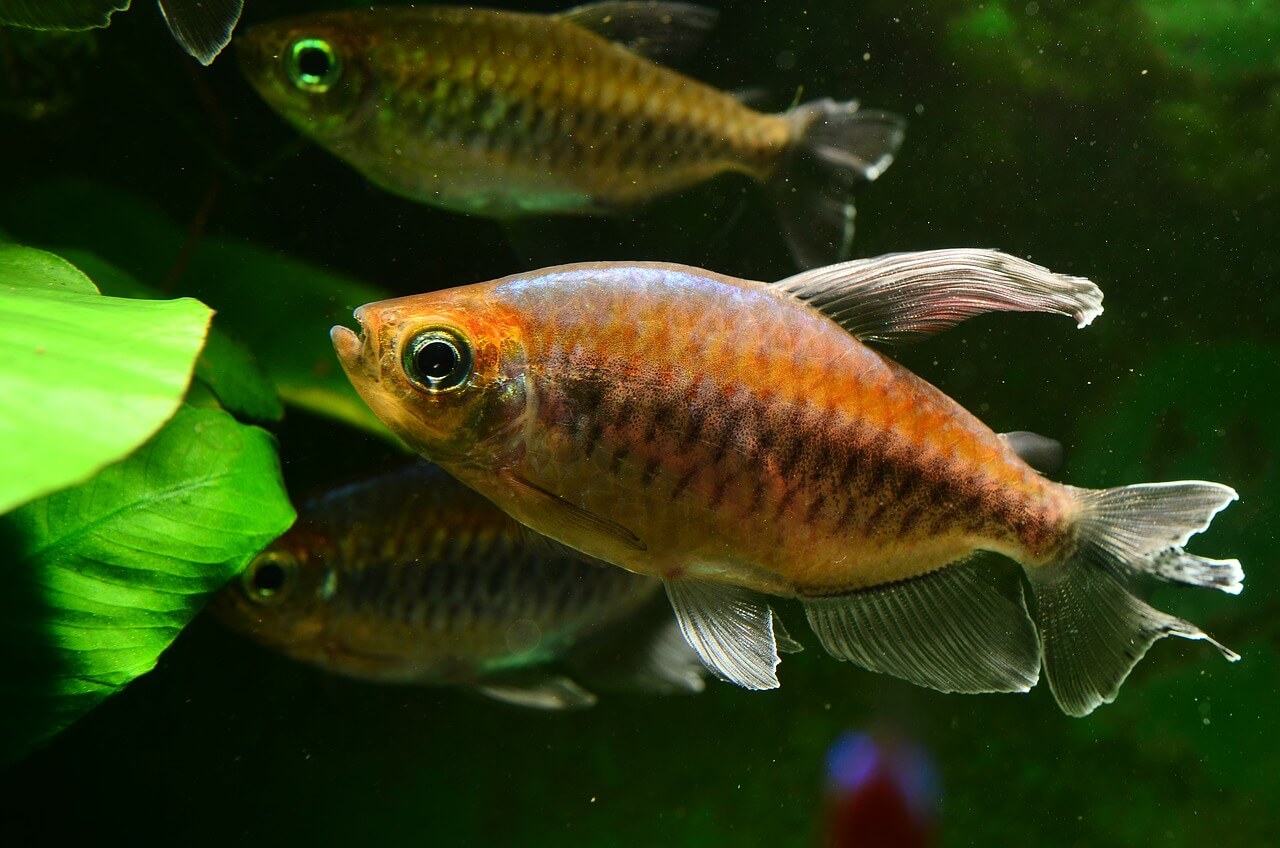Trying to cycle a fish tank in 24 hours is not recommended. Establishing a beneficial bacterial colony in a new aquarium typically takes 4-6 weeks. Be patient and follow the proper steps to ensure a healthy and stable environment for your fish.
It’s also important to note that even with these methods, it is still essential to monitor the water chemistry, perform regular water changes and be mindful of the bio load in the tank.
It’s also worth mentioning that there are no guarantees that these methods will cycle your tank in 24 hours, and trying to rush the process could put your fish at risk. However, it is always better to be safe than sorry and follow the recommended steps for cycling a tank, regardless of the time frame.
Using Pre-established Media to speed up Fish Tank Cycling
One way to speed up cycling a fish tank is by using pre-established filter media from a mature aquarium. This method involves taking media, such as bio-balls or ceramic noodles, that has already been colonized by beneficial bacteria and placing them in the new tank. This will introduce a mature colony of beneficial bacteria to the new tank, which will help to quickly establish the necessary bacteria in the tank and speed up the cycling process.
It’s essential to make sure that the media you are using comes from a tank that has similar water parameters to your new tank, as well as identical fish species you plan to have, to ensure compatibility. It’s also important to note that even with this method, it is still essential to monitor the water chemistry, perform regular water changes and be mindful of the bio load in the tank. Finally, it’s also worth mentioning that pre-established media can help speed up the process, but it’s not guaranteed to cycle the tank in 24 hours.
Using Bacteria Starter Cultures to Speed up Fish Tank Cycling
Another way to speed up the cycling process of a fish tank is by using a bacteria starter culture. These cultures contain beneficial bacteria specifically formulated to jumpstart the cycling process and establish a healthy bacterial colony in the tank more quickly. The cultures are available in various forms, such as liquids, powders, and tablets, which can be added to the tank water.
When using a bacteria starter culture, it’s essential to follow the instructions carefully, monitor the water chemistry, and perform regular water changes to ensure a healthy and stable environment for your fish. Some of these products may also require a temperature and pH range to be effective, so checking the instructions before using them is essential.
It’s also important to note that even with this method, it is still essential to monitor the water chemistry, perform regular water changes and be mindful of the bio load in the tank. It’s also worth mentioning that using bacteria starter cultures can help speed up the process, but it’s not a guarantee to cycle the tank in 24 hours. It’s also essential to select a high-quality product and follow the instructions carefully to ensure the effective colonization of beneficial bacteria.
Using Live Plants to speed up Fish Tank Cycling
Live plants can also help to speed up the process of cycling a fish tank. Plants help remove ammonia from the water and create a more stable environment for beneficial bacteria. The method of photosynthesis, in which plants use light energy to convert carbon dioxide and water into oxygen and glucose, can also help to lower the amount of carbon dioxide and increase the amount of oxygen in the water, which is beneficial for fish and beneficial bacteria.
When using live plants to speed up the cycling process, it’s essential to choose plants that are hardy and easy to care for, such as Java Fern, Anubias, or Hornwort. These plants can help to consume ammonia, nitrite, and nitrate and provide a natural source of oxygen to the tank. It’s also essential to ensure that the plants have enough light and nutrients to grow and are compatible with the fish species you plan to have.
It’s also important to note that even with this method, it is still essential to monitor the water chemistry, perform regular water changes and be mindful of the bio load in the tank. It’s also worth mentioning that using live plants can help speed up the process, but it’s not guaranteed to cycle the tank in 24 hours. Selecting plants compatible with your tank’s water parameters and fish species is also essential.
Using a High-Quality Filter to Speed up Fish Tank Cycling
A high-quality filter can also help to speed up the process of cycling a fish tank. A good filter provides an ideal environment for beneficial bacteria to grow by providing a large surface area for the bacteria to colonize. A good filter also helps to remove waste and debris from the water, which can help to reduce the amount of ammonia and other toxins in the water.
When using a filter to speed up the cycling process, choosing a filter that is appropriate for the size of your tank and has a high flow rate is crucial. It’s also essential to ensure the filter has good mechanical and biological filtration; this way, it can trap debris and provide a suitable environment for beneficial bacteria to colonize.
It’s also important to note that even with this method, it is still essential to monitor the water chemistry, perform regular water changes and be mindful of the bio load in the tank. It’s also worth mentioning that using a high-quality filter can help speed up the process, but it’s not guaranteed to cycle the tank in 24 hours. Therefore, choosing a filter appropriate for the tank size and the species of fish you plan to keep is also essential.
Monitoring Water Parameters to Speed up Fish Tank Cycling
Monitoring water parameters is crucial in speeding up upcycling a fish tank. By regularly testing the water for pH, ammonia, nitrite, and nitrate levels, you can better understand the progress of the cycling process and make adjustments as necessary. This can help to ensure that the beneficial bacteria are colonizing effectively and that the water is safe and healthy for the fish.
When monitoring water parameters, it’s essential to use a high-quality test kit and to follow the instructions carefully. Test for pH, ammonia, nitrite, and nitrate at least once a week and make adjustments as necessary. If the ammonia or nitrite levels are too high, perform a water change to reduce them. If the nitrate level is too high, it might indicate that the beneficial bacteria have fully colonized the tank and it’s safe to add fish.
It’s also important to note that even with this method, it is still essential to monitor the water chemistry, perform regular water changes and be mindful of the bio load in the tank. It’s also worth mentioning that monitoring water parameters can help speed up the process, but it’s not guaranteed to cycle the tank in 24 hours. Finally, it’s also important to be patient and follow the procedure correctly to ensure a healthy and stable environment for the fish.
Is it possible to cycle a fish tank in 24 hours?
While trying to cycle a fish tank in 24 hours is not recommended, as establishing a beneficial bacterial colony typically takes 4-6 weeks, some steps can be taken to speed up the process. Methods such as using pre-established filter media from a mature aquarium, using a bacteria starter culture, adding live plants, using a high-quality filter, and monitoring water parameters can help to speed up the process. Still, it’s not guaranteed to cycle the tank in 24 hours. Therefore, it’s essential to follow the recommended steps for cycling a tank, regardless of the time frame, and to ensure the well-being of the fish.
What are the risks of trying to cycle a tank in 24 hours?
Enrolling a tank in 24 hours can put the fish in danger. The beneficial bacteria colony might not be established enough to support the bioload and keep the water parameters stable. This can lead to poor water quality, high levels of toxins, and an increased risk of disease and death of the fish. It’s essential to be patient and follow the recommended steps for cycling a tank, regardless of the time frame, to ensure the well-being of the fish.
What are some methods to speed up the cycling process?
Methods to speed up the cycling process include: using pre-established filter media from a mature aquarium, using a bacteria starter culture, adding live plants, using a high-quality filter, and monitoring water parameters. These methods can help introduce a mature colony of beneficial bacteria to your new tank and speed up the cycling process, but it’s not guaranteed to cycle the tank in 24 hours. Therefore, it’s essential to follow the recommended steps for cycling a tank, regardless of the time frame, to ensure the well-being of the fish.
using guppies to cycle your tank
Cycling a fish tank is a process of introducing beneficial bacteria to the environment which helps to break down harmful pollutants like ammonia and nitrate into less harmful forms. Guppies are favored for tank cycling as they are resilient, easy to care for, and easy to introduce to the tank. Before beginning the cycling process, it is important to test the tank water for ammonia and nitrate levels. If levels are already elevated, the tank may already be cycling. Initially adding 2-3 small guppies will start the process, after which ammonia and nitrate levels must be monitored every few days until levels stabilize. Upon successful cycling, more guppies can be added according to tank size and stocking levels. Additionally, to promote a healthy fish tank, 25-40% of the water should be changed once a week. Following these steps ensures a healthy, cycled tank full of guppies perfect for any fish enthusiast!
How can I ensure that my tank is fully cycled?
To ensure that your tank is fully cycled, monitoring the water parameters, specifically the ammonia, nitrite, and nitrate levels, is essential. During the cycling process, ammonia levels should rise first, then nitrite levels, and finally, nitrate levels should appear. Once nitrate is present in the tank, and the stories of ammonia and nitrite are zero, it’s safe to assume that the tank is fully cycled. Additionally, a fully cycled tank should have a stable pH level and a good amount of beneficial bacteria present.
How can I maintain a fully cycled tank?
To maintain a fully cycled tank, keeping the bioload safe and performing regular water changes is essential. Frequent water changes will help to remove waste and debris from the water, which can help to reduce the number of toxins in the water. In addition, regular monitoring of water parameters and performing maintenance on equipment, such as the filter, will help to keep the tank in good condition.
How many fish can I add to a fully cycled tank?
The number of fish that can be added to a fully cycled tank depends on the size of the tank and the bioload. A general rule of thumb is to add no more than one inch of fish per gallon of water, but it’s essential to consider the specific needs of the fish species you plan to keep. It’s also essential to add fish gradually, rather than all at once, to ensure that the beneficial bacteria colony can keep up with the increased bioload.



